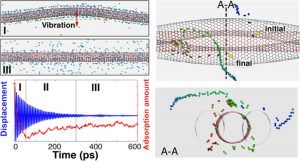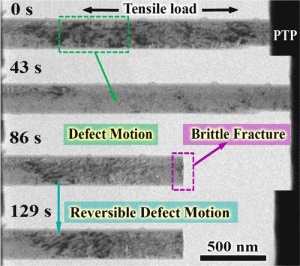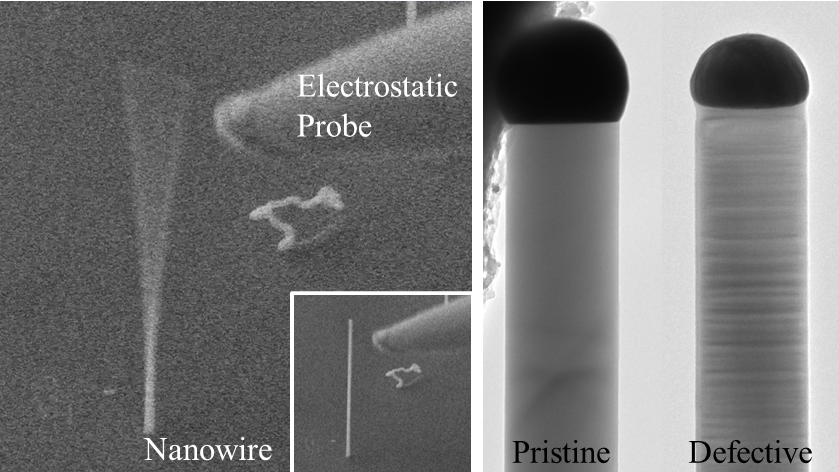Journal paper
Publication Types:
Toward Patient Specific Models of Pediatric IVDs: A Parametric Study of IVD Mechanical Properties
Patient specific finite element (FE) modeling of the pediatric spine is an important challenge which offers to revolutionize the treatment of pediatric spinal pathologies, for example adolescent idiopathic scoliosis (AIS). In particular, modeling of the intervertebral disc (IVD) is a unique challenge due to its structural and mechanical complexity. This is compounded by limited ability to non-invasively interrogate key mechanical parameters of a patient’s IVD. In this work, we seek to better understand the link between mechanical properties and mechanical behavior of patient specific FE models of the pediatric lumbar spine. A parametric study of IVD parameter was conducted, coupled with insights from current knowledge of the pediatric IVD. In particular, the combined effects of parameters was investigated. Recommendations are made toward areas of importance in patient specific FE modeling of the pediatric IVD. In particular, collagen fiber bundles of the IVD are found to dominate IVD mechanical behavior and are thus recommended as an area of primary focus for patient specific FE models. In addition, areas requiring further experimental research are identified. This work provides a valuable building block toward the development of patient specific models of the pediatric spine.
Soot particle morphology and nanostructure with oxygenated fuels: A comparative study into cold-start and hot-start operation
This study investigates the morphology and nanostructure of soot particles during cold-start and hot-start engine operation of a diesel engine using oxygenated fuels. The soot samples were analysed using transmission electron microscopy. The oxygen content in the fuel was varied between 0 and 12%. The results showed that the primary particles during cold-start have significantly smaller size when compared to hot-start engine operation. The addition of oxygenated fuels also resulted in smaller sized primary particles. Smaller radius of gyration and higher fractal dimension of soot aggregates during cold-start would mean smaller aggregate size with a more compact structure. Shorter fringes with a higher inter-fringe spacing for cold-start would mean lower graphitisation of soot particles that could be related to higher oxidation reactivity of soot particles.
Estimation of load conditions and strain distribution for in vivo murine tibia compression loading using experimentally informed finite element models
The murine tibia compression model, is the gold standard for studying bone adaptation due to mechanical loading in vivo. Currently, a key limitation of the experimental protocol and associated finite element (FE) models is that the exact load transfer, and consequently the loading conditions on the tibial plateau, is unknown. Often in FE models, load is applied to the tibial plateau based on inferences from micro-computed tomography (μCT). Experimental models often use a single strain gauge to assess the three-dimensional (3D) loading state. However, a single strain gauge is insufficient to validate such FE models. To address this challenge, we develop an experimentally calibrated method for identifying the load application region on the tibial plateau based upon measurements from three strain gauges. To achieve this, axial compression was conducted on mouse tibiae (n=3), with strains gauges on three surfaces. FE simulations were performed to compute the strains at the gauge locations as a function of a variable load location. By minimising the error between experimental and FE strains, the precise load location was identified; this was found to vary between tibia specimens. It was further shown that commonly used FE loading conditions, found in literature, did not replicate the experimental strain distribution, highlighting the importance of load calibration. This work provides critical insights into how load is transferred to the tibial plateau. Importantly, this work develops an experimentally informed technique for loading the tibial plateau in FE models.
Characterisation on the hygrothermal degradation in the mechanical property of structural adhesive: A novel meso-scale approach
Structural adhesives are being increasingly used for bonding of dissimilar materials, however environmental degradation remains a significant challenge limiting the bonding reliability. A common form of degradation comes from water ingress, regarding which there is limited quantitative understanding of how water diffusion affects the adhesive local mechanical properties. This work proposes a meso-scale approach to characterise the influence of water diffusion on local mechanical properties of structural adhesives at elevated temperature, aiming to develop a model of degradation due to water exposure. Gravimetric study was conducted on adhesives immersed in deionised and 5 wt% NaCl water, to obtain water diffusion characteristics. The immersed specimens were periodically removed from the aqueous environment and precisely cut to expose the internal section. The samples were then indented using nanoindentation to extract the modulus and hardness distribution. SEM observation was conducted to analyse the microscopic morphology and ageing mechanism. Experimental results revealed that water diffusion caused significant local (meso-scale) degradation in adhesive mechanical properties. Increase in local moisture concentration led to greater degradation as moisture gradually diffused inward. Comparing to salt water immersion, the elastic modulus and hardness of adhesive saturated in deionised water decreased by further 5.9% and 11.9%, respectively. The developed degradation model coupled with insights from ageing mechanism provides a detailed understanding of degradation in adhesive property due to water diffusion. The proposed characterisation approach can be readily applied to other adhesives. Furthermore, this model allows for degradation of such adhesives to be reasonably predicted through FE modelling effort.
The impact of chemical composition of oxygenated fuels on morphology and nanostructure of soot particles
Over the years, oxygenated fuels such as biodiesel and alcohol fuels have been useful in reducing particulate matter (PM) emissions of diesel engines. The presence of oxygen in the fuel impacts the soot oxidation process and thus the morphology and nanostructural characteristics of soot particles change. The nanostructure characteristics of soot particles hold an importance for their oxidation reactivity and toxicity. Higher reactivity and exposure of soot particles to oxygen will affect the regeneration and filtration efficiency of diesel particulate filters. In this study, we investigate the impact of oxygen functional groups on morphology and nanostructure of soot particles by blending different types of essential oil in diesel. The test fuels were prepared by mixing orange oil, tea tree oil, eucalyptus oil and coconut biodiesel to keep an overall oxygen content of 0 and 2.2%. Transmission electron microscopy was used to investigate the physical changes in the nanostructure of soot particles. The primary particle diameter decreases, and fractal dimension of soot aggregates increases for oxygenated fuels. Microscopy reveals that the arrangement of carbon lamellae within the soot particles changes significantly with use of oxygenated as observed by the changes in fringe length, fringe tortuosity and fringe separation distance. Lower fringe length, higher fringe tortuosity and fringe separation distance shows disordered arrangement of carbon layers with more possibility of oxygen attack. The different structural characteristics for oils having same oxygen content shows that formation and structure of soot particles strongly depend upon chemical structure and composition of the fuel.
Influence of fuel-oxygen content on morphology and nanostructure of soot particles
The share of biofuels in the fuel market has increased over the last several decades. This is related to their potential to reduce the emissions including particulate matter. It has been frequently reported that the fuel oxygen content is the main reason for the reduction in particulate matter emissions. To understand the effect of fuel oxygen content on morphology and nanostructure characteristics of soot particles, different fuels such as diesel, coconut biodiesel and triacetin were tested in a diesel engine with various mixing proportions. The fuel blending was done in such a way that overall oxygen content of fuel was kept in range of 0% to 14% (wt.%). The soot particles were sampled from the engine exhaust system and analysed with a transmission electron microscope (TEM) at low and high spatial resolution. The TEM images were post-processed with the help of an in-house developed image analysis program to determine the morphology and nanostructure characteristics. The results show that oxygenated fuel blends emit smaller sized soot particles forming compact aggregates. The investigation of the internal structure of soot particles show disordered arrangement of graphene layers for fuels up to 11.01% fuel oxygen content (pure biodiesel); however, the opposite trend was observed for fuel blends with triacetin which could be related to the presence of oxygen in a different chemical functional group.
How Gaseous Environment Influences a Carbon Nanotube-Based Mechanical Resonator
Nanoscale mechanical resonator-based nanoelectromechanical systems have been reported with ultrahigh sensitivity, which are normally acquired from an ultravacuum environment at cryostat temperature. To facilitate their practical applications for gas sensing or bio-detection, it is critical to understand how the fluid (gas or liquid) environment will impact the resonance behaviors of the nanoresonator. This work reports a first-time comprehensive investigation on the influence of the N2 gaseous environment on the resonance properties of carbon nanotube (CNT)-based mechanical resonator, through a combination of grand canonical Monte Carlo and large-scale molecular dynamics simulations. It is shown that the gaseous environment exerts a significant effect on the resonance properties of the CNT resonator through a dynamic desorption and readsorption process. Under the temperature of 100 K and the pressure of 1 bar, the displacement amplitude of the CNT resonator is found to experience a sharp reduction of about 82% within the first 90 ps vibration in the N2 gaseous environment. Further, a large initial excitation is found to result in smaller adsorption and a reduced damping effect. For instance, when the excitation velocity amplitude increases from 2 to 8 Å/ps, the damping ratio shows more than 40% reduction. It is found that higher pressure leads to a smaller resonance frequency and enhanced damping effect, while higher temperature induces an increase in the resonance frequency but a decrease in the damping ratio. This work shows that the gaseous environment has a marked impact on the vibrational properties of nanoresonators, which should shed light on the application of mechanical nanoresonators in a fluid environment.

Experimental Analysis of the Morphology and Nanostructure of Soot Particles for Butanol/Diesel Blends at Different Engine Operating Modes
In order to comply with strict emission standards, a reduction in diesel particle matter emissions can be addressed by minimizing particle formation and by optimizing particle oxidation in the combustion chamber and in the exhaust and diesel particulate filter systems. The characterization of soot morphology and nanostructure is necessary to understand the soot formation and oxidation processes. Furthermore, understanding these characteristics is important because they affect the aerodynamic behavior of diesel particulate matter in the exhaust system, diesel particulate filter systems, and the environment. This study aims to investigate the influence of fuel oxygen content and engine operating modes on the morphology and nanostructure of soot particles. The oxygen content in the fuel was varied from 0% to 4.32% and 6.48% by using diesel and 20 and 30% butanol blends (by volume) with diesel. As the oxygen content increased, corresponding nanostructure characteristics fringe length and separation distance increased and fringe tortuosity decreased. Changes to the nanostructure properties will have an influence on the operation of diesel particle filters, particularly during the regeneration processes. However, other characteristics such as the influence of these fuels on particle mass and number emissions, performance parameters, and gaseous emissions will also have a significant influence on implementing these fuels in modern diesel vehicles.
Comparison of manual and automatic approaches for characterisation of morphology and nanostructure of soot particles
Highlights
- The manual and automatic approaches for analysis of the morphology and nanostructure of soot particles are compared.
- Fast Fourier transform (FFT) is applied for calculation of fringe separation distance.
- The comparison between manual and automated approaches showed similar results with better accuracy.
Abstract
This study is an attempt to compare the manual and automatic approaches for analysis of the morphology and nanostructure of soot particles. The automated methodology is composed of two parts: soot particle analysis (morphology characterisation) and soot fringe analysis (nanostructure characterisation) such as fringe length, fringe tortuosity and fringe separation distance. In this study the application of Fast Fourier Transform (FFT) is introduced, which omits the manual selection of fringe pairs for measurement of fringe separation distance and aids fast computation. The parameters which effect the performance of automated approach were identified and optimised. The automated approach was applied to analyse images from different fuels. Using the optimised parameters, the performance of the automatic approach was tested against results obtained by the manual approach. The statistical comparison between two approaches showed similar results but with better accuracy for automated approach (lower standard error) and thus validates the functionality of the proposed methodology. The application of FFT in computation of fringe separation distance reduces the computation time and avoids biases of operator in selecting fringe pairs.
Steered molecular dynamics characterization of the elastic modulus and deformation mechanisms of single natural tropocollagen molecules
Abstract
Collagen is a common structural protein, providing mechanical integrity for various vertebrate connective tissues such as cartilage and bone. The mechanical behaviours of these tissues under physical stimulations are controlled by the hierarchical structure of collagen and its interactions with other extracellular matrix molecules. However, the mechanical properties and deformation mechanisms of natural collagen under physiological loading rates at the molecular level are not fully understood. In this study, comprehensive steered molecular dynamics (SMD) simulations were performed on the 2nd intact overlap region (d2ol) and the 2nd intact D-period (d2olgp) of an in-situ characterized collagen molecule, under a large range of strain rates (6.5 × 106% s−1 to 1.3 × 1012% s−1). The results show that, depending on the applied strain rates, tropocollagen molecules unfold in different ways. Particularly, at high and intermediate strain rates, the number of inter-chain hydrogen bonds decreases rapidly even at small deformations, leading to a dramatic increase in the force. This results in an increase in the estimated Young’s modulus of collagen triple helices as the deformation rate goes up, which, together with the nonlinear mechanical behaviour, explains the broad range of the Young’s modulus for collagen model peptides reported in earlier SMD studies. Atomistic-level analyses indicate that the elastic modulus of single tropocollagen molecules decreases as the strain rate becomes smaller. However, for strain rates below 1.3 × 108% s−1, the tangent Young’s modulus of d2ol (d2olgp) converges to approximately 3.2 GPa (3.4 GPa), at the strain of 10.5% (12%) when the segment is fully uncrimped. Furthermore, for strain rates under 1.3 × 108% s−1, d2ol and d2olgp show identical deformation mechanisms (unwinding, uncoiling and backbone stretching), but the corresponding strain ranges are different. This study will aid in future studies on characterizing the mechanical properties of collagen molecules and collagen-like peptides by indicating the proper pulling strain rates and how to determine the suitable strain range used for evaluating the elastic modulus.

In situ mechanical resonance behaviour of pristine and defective zinc blende GaAs nanowires
Abstract
The structural versatility of semiconducting gallium arsenide (GaAs) nanowires (NWs) provides an exciting direction for the engineering of their mechanical and dynamic properties. However, the dynamic behaviour of GaAs NWs remains unexplored. In this study, comprehensive in situ mechanical resonance tests were conducted to explore the dynamic behaviour of pristine and defective zinc blende GaAs NWs. The effects of stacking faults (SFs), amorphous shell, NW tapering and end-mass particles were investigated. The quality factors (QFs) of the GaAs NWs were found to be predominately governed by surface effects, which increased linearly with the volume to surface area ratio. Interestingly, SFs were found not to influence the QFs. To extract the mechanical properties, the Euler–Bernoulli beam theory was modified, to incorporate the core–shell model, NW tapering and end-mass particles. It was found that the core–shell model accurately predicts the mechanical properties of the pristine GaAs NWs, which exhibit significant stiffening at radii below 50 nm. Conversely, the mechanical properties of the defective NWs were influenced by the presence of SFs, causing a wide variance in the Young’s modulus. Apart from establishing an understanding of the resonance behaviour of GaAs NWs, this research provides guidance for the design of NWs for their applications in dynamic nanomechanical devices with tailorable dynamic properties.
Atypical defect motions in brittle layered sodium titanate nanowires
Abstract
In situ tensile tests show atypical defect motions in the brittle Na2Ti3O7 (NTO) nanowire (NW) within the elastic deformation range. After brittle fracture, elastic recovery of the NTO NW is followed by reversible motion of the defects in a time-dependent manner. An in situ cyclic loading–unloading test shows that these mobile defects shift back and forth along the NW in accordance with the loading–unloading cycles and eventually restore their initial positions after the load is completely removed. The existence of the defects within the NTO NWs and their motions does not lead to plastic deformation of the NW. The atypical defect motion is speculated to be the result of the glidibility of the TiO6 layers, where weakly bonded cation layers are in between. Exploration of the above novel observation can establish new understandings of the deformation behavior of superlattice nanostructures.


